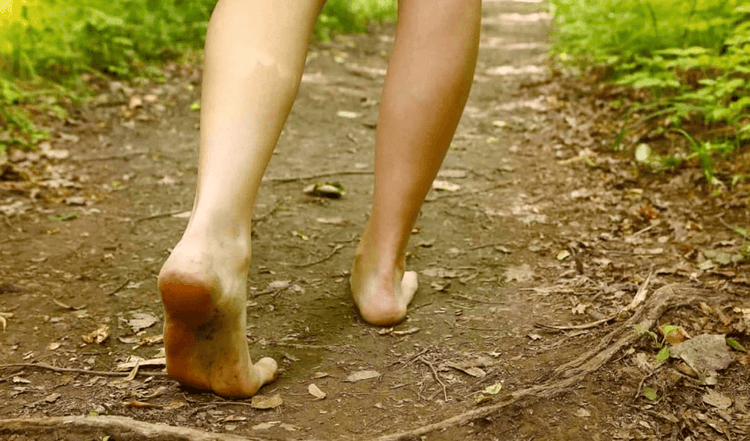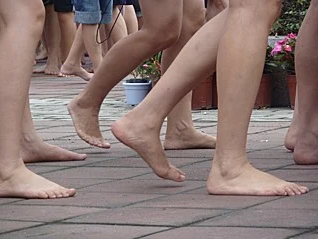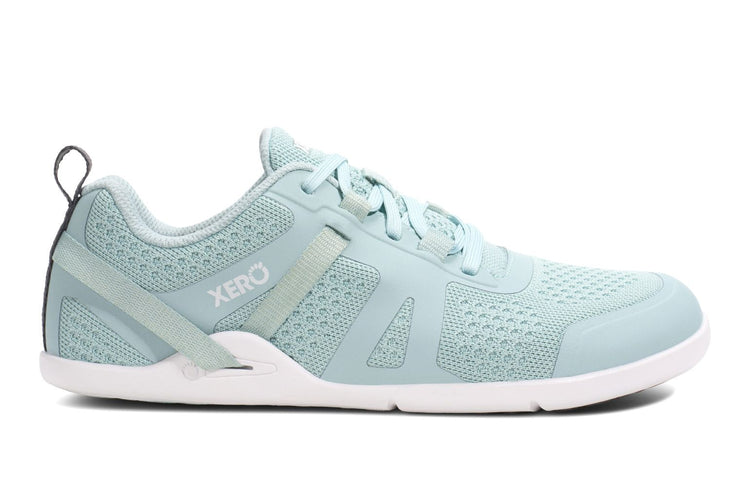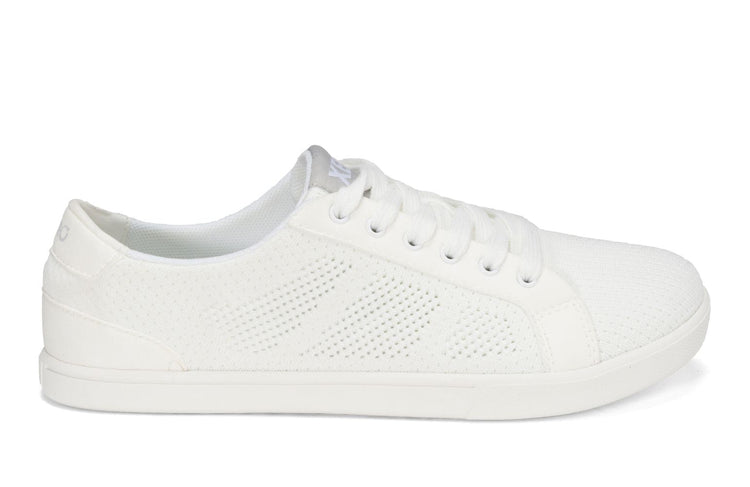latest News

A Podiatrist Explains Why “Every Shoe Is A Walking Shoe”
It’s tempting to treat your shoe rack like a toolbox. For each situation, there’s a product in the $133 billion shoe industry to fit it, from workout shoes to hiking, running, and yes, even walking shoes! But do we need to have a specialized shoe for something as fundamental and human as walking? Massachusetts-based podiatrist Dr. Alissa Kuizinas isn't so sure. “We often have this perception that we need a special category of shoe to wear for walks,” she says. “There’s even a whole segment of footwear called ‘walking shoes,’ and there’s all kinds of technology involved in that. But every shoe can be a walking shoe, as long as it meets certain standards.”It took a long journey for this doctor to reach her current conclusions on walking shoes. Here’s how her personal experience led her to change her mind, and how she guides clients into finding the right shoe for their situation. “I knew there had to be a better solution”Dr. Kuizinas has more than a medical perspective on footwear. She struggled with foot discomfort for years, and found that she was repeatedly jamming her big toe inside her shoes with each step she took – “even with my ‘good shoes’ on,” she recalls.“Traditional medicine would recommend that I wear custom orthotics, limit my activity and wear stiff-soled shoes until the pain became bad enough to require surgery,” she says. “I knew there had to be a better solution.”The deeper this foot doctor delved, the more she found that her feet weren't the problem. It was her shoes!“Even though shoe companies spend millions of dollars on technology and design development, the shoes they produce and sell are doing a major disservice to human feet,” she explains. “From cushioning, to heel-toe drops, stiff soles, to narrow toe boxes, nearly every aspect of a modern shoe has a negative impact on foot movement. It leads to an epidemic of dysfunctional, weak, and malfunctioning feet. And most of us aren’t even aware this is happening!” She finally found her fit once she started wearing anatomically designed, flexible shoes with little to no padding, like Xero Shoes. In a matter of months, she wasn’t just feeling better; she had changed dramatically her perspective on what a shoe should be! Get Out of the Way of Your Feet“The primary purpose of shoes is to protect our feet from the elements and from different surfaces,” Dr. Kuizinas says. “They’re for when we are out in the world walking on a slippery or wet surface. Ultimately, shoes are really there JUST for that purpose. They don’t need to be bulky and restrictive, or supporting our feet. Our feet are designed to support themselves!” So… why not just walk barefoot all the time? Research has actually supported this idea of slight “protection” being beneficial. A study comparing outdoor barefoot walking with minimalist footwear found that the shoes actually improved walking form in both younger and older adults, and reduced risk of falling. To maximize on these benefits, Dr. Kuizinas recommends a ‘as little shoe as possible’ approach to footwear, and instead focusing on building resilient, capable feet. “Rather than building up the shoe to try to externally support the foot and limit motion, minimalist shoes get out of the way of our feet,” she says. “They allow feet to function naturally, to move, and bend. The transition to minimalist shoes involves stripping down the unnecessary and harmful components of modern shoes so that feet can be feet again!”When working with clients today, Dr. Kuizinas shies away from the term “minimalist shoes.” Instead, she likes to call them “functional shoes” or “natural shoes.” “Natural footwear is really on the leading edge of shoe technology,” she says. “By stripping away the unnecessary and downright harmful features of shoes, we allow feet to function effortlessly as they were designed to!”How to Find Your “Functional” Walking ShoeDr. Kuizinas has a three-point checklist of what she looks for in a functional shoe, which not-so-coincidentally match up with the three major functions of the human foot during walking. “The foot has three jobs: to be a ‘mobile adaptor’ or shock absorber when it first hits the ground, to be a rigid lever during push-off, and to be a sensor of the environment,” she explains. “As long as it can do these three things, it will function well.” Here’s how she says those functions should be reflected in the shoes you wear: Wide Toe Box: “Functional sneakers should have a wide, foot-shaped toe box. They’re broad enough to allow our big toe to sit in a proper alignment.”Flat & Flexible Soles: “Our feet contain 26 bones and 33 joints. And joints are designed to move! A flexible sole allows for natural foot movement. By contrast, stiff and rigid shoes with elevated heels prevent the joints from fully moving through their range of motion and limit the foot.”Minimal cushion and support: “A functional shoe should only be only as cushioned as you really need. Overly cushioned shoes dampen your perception of what's going on with your feet, and your ability to walk well.” If you follow those simple standards, Dr. Kuizinas says, every shoe can be a walking shoe!Be Patient and Build Up to BarefootBoth from her personal experience and in her professional practice, Dr. Kuiz recommends being patient when it comes to transitioning to full-time “functional” footwear. In the early days, she recommends a one-two approach of wearing functional shoes primarily for low-impact activities like walking and running errands, while also going barefoot around the house to help build resilience in the feet and ankles. “As your foot function improves, you’ll be able to tolerate less arch supportive shoes for greater amounts of time,” she explains. Need help finding your perfect pair of shoes? TAKE THE SHOE FINDER QUIZ

Flat Feet, High Arches, and Running Barefoot
Not infrequently, when the topic of barefoot running comes up, or someone takes a look at my Xero Shoes, whomever I'm speaking with will say:I can't do that. I need support.Oh? I'll respond. Why do you need support?Then something happens that I love. I get one of two seemingly contradictory answers. Either: "I have flat feet!" "I have high arches!" They usually like to add to their proclamation some form of external validation. Like, "I've seen one of the best podiatrists in the world and he agrees that I need orthotics."Oh? He agrees that you need to spend an additional $300-1,000 with him? What a shock.From the perspective of barefoot runners and researchers, high arches and flat feet are not a problem.First of all, the height of your arch is largely genetically determined.Secondly, the problem isn't your arch height, or lack thereof, but whether your arches are STRONG.That is, the "cure" for the problem is not putting your foot in a cast (which is essentially what an orthotic is), it's using it, working on strengthening it.One reason that running in bare feet could help strengthen your feet and arches is that landing with a mid-foot or forefoot strike can actually engage the muscles in your feet.Think about it: When does immobilizing something make it stronger? Never!Personally, I had flat feet my whole life. If I stepped out of a pool, my footprint looked like an oval. After a few months of running and walking barefoot, I started developing arches! I ruined all the family jokes about the flippers I had at the end of my legs.Now, I get out of the water, step on the ground, and you see the outline of a FOOT. Granted, I don't have drive-a-bus-under-them arches but, again, that's genes. All I know is that I haven't used my expensive shoe inserts in years and my feet haven't had problem in all that time.

How to Walk Barefoot
I expect (and kind of hope) that many people reading the title of this section will think, "Uh, I don't need instruction about how to walk. I've been doing it all my life."I also expect (and definitely hope) that others will read the title and think, "Finally, the answer to my most burning question! I've been worried that I'm walking wrong."For those of you in the first group, let me ask you this: Do tribal women in Africa with water jugs balanced on their heads walk in the same way that Olympic race walkers do? And, do either of those people walk the way you do?I'd bet that the answer you found for both of those questions is No.That's because walking isn't just walking. There are ways of walking that are more or less effective, more or less efficient, more or less healthy and strong.And if you accept that premise, that could put you in the second group.Now, for those of you in the second group, I have what could seem like bad news. There is no one answer to "How do I walk."This article will not reveal the hidden secret of locomotion that only wisened Tibetan lamas from the Drepung monastery have taught to their senior disciples, or the geometrical relationships between your lower extremity joints that is optimal for effortless, pain-free walking, or the best footwear you can use for carrying a 200 pound pack on a 1,000 mile hike over broken glass.It'll actually do something better.It'll show you how to become your own best teacher and discover your own secrets for walking efficiently, enjoyably, and easily.Before we can discuss walking, lets review of the premises behind, and arguments supporting barefoot running: Landing on your heel, especially with the ankle forward of the knee and the knee almost straight, sends shock through the joints -- the ankle, the knee, the hip, and up the spine.This isn't good.Running barefoot reduces the likelihood that you'll land on your heel... because it hurts.Landing on the forefoot or midfoot, with a bent knee and the ankle not front of the knee, reduces the force going through your joints, allowing you to use the muscles, ligaments, and tendons as natural springs and shock absorbers.So, what does all this have to do with walking?Well, the whole conversation about foot-strike rarely came up prior to the barefoot running boom. Now it's practically dinner party conversation, where the barefoot gang looks down their noses in disgust at shoe-wearing heel-strikers. And the increase in the volume of the foot-strike conversation has led to another question, which probably nobody asked prior to the publication of Born To Run. This is a question I'm emailed almost daily, namely, "How should my foot strike when I walk?"It sounds like a reasonable question.If there is some optimal way for your foot to land when you run, there must be a "right" way for it to land when you walk, right?Well, there's debate among the barefoot running research community about whether a forefoot strike is better/worse than a midfoot strike, or whether foot strike is idiosyncratic and different for different runners. There's even an argument about whether heel striking is as evil as as most barefoot runners take it to be.How can this be?Simple. Because heel strike is the effect of other aspects of your biomechanics, not the cause.Think about it. The only way you can change how your foot lands on the ground is what you do with your ankle, your hip, and your knee.To not land on your heel when you run, you probably need to bend your knee more than you usually do. But that alone could cause you to trip over your toes, so you also need to bend your hip a bit more. And then you may relax your ankle a little rather than pulling your toes towards your knee.So "land on your forefoot" is really just a cue for "bend the hip and knee and relax the ankle," but if you told someone to change their hip, knee and ankle joint angles, they'd be too confused to even take a step.Well, it's similar with walking. Where your foot lands isn't the issue. How you move your foot through space is.When you walk, your foot can land in one of three ways: touching the forefoot first, followed by the heel dropping to the ground; landing basically flat-footed, probably touching the midfoot first, or; touching/rolling over the heel... which is sort of still a flat-footed landing but with the heel contacting first.Which one of these happens is a function of how fast/slow you're walking, whether you're walking up/down hill, and what kind of surface you're on.Really, there's no need to worry about foot-strike. It'll take care of itself... if you pay attention to this next thing.First, you'll want to be barefoot, or as close to barefoot as possible.Why? Because there's value in being able to articulate the foot and to letting the nerves in your feet actually feel the ground.Many podiatrists recommend barefoot walking as a cure for plantar fasciitis. Many chiropractors and orthopedic physicians recommend barefoot walking to cure lower back pain.Being barefoot can help with plantar fasciitis because, when you're out of shoes, especially on uneven surfaces, you'll use your feet in a way that "pre-loads" the plantar fascia, putting them in a strong position when you need them.Being barefoot can help with lower back pain because... well let's take a look at that one more closely.Imagine standing on one leg.If I asked you to start walking, most people would basically swing their free leg out in front of them and, at the right moment, push off the toes of the back leg to pivot over the front foot, which has landed on the heel way out in front of you.You basically walk "behind your feet." One interesting thing about walking behind your feet is that you're never really off balance. We'll come back to that idea in a moment.Now, imagine being on one foot again. If I asked you to contract whatever muscle or muscles you can think of that would move you forward, which one(s) would you tighten. Remember I said "move you forward." Falling forward doesn't count, so the answer is not "ankle" (leaning) or "abs" (as in, bending forward until you fall).The answer is the muscles that are referred to as the "prime movers" in our body: The glutes and hamstrings.Tighten the glutes and hamstrings and you'll actually MOVE forward.And stronger glutes and hamstrings protect the lower back.But after you tighten your glutes and hamstring you will eventually get off balance and fall on your face... unless... you put your other foot down to stop you.And here's where it gets cool.If you simply place your foot down where it'll stop you from falling (rather than swinging it out in front of you like you usually do), it'll land closer to your center of mass, more flat-footed, with a slightly bent hip and knee, and with the now front leg in a biomechanically stronger position. You will have planted your foot.If you repeat this -- using your glutes and hips to move you forward, and placing your foot instead of swinging your leg forward -- you'll be supporting your lower back... and your knees, and your hips, and even your ankles.Your foot-strike will take care of itself.You'll feel like you're walking "on top of your feet" rather than behind them.And this makes you stronger, whether you're going for a stroll or carrying a 50 pound pack on a trail (which, by the way, will be easier because your engaged glutes and hamstrings support your lower back).When you think about staying on top of your feet, and using your glutes and hamstrings, you'll naturally discover the easy and efficient ways to walk in any situation. You'll understand it from the inside out, from your own experience, not from some guidebook about how many inches behind your knee you should have your ankle when you're walking up a 10 degree incline in 50 degree weather on a Thursday.Combine this with feeling the world because you're barefoot or in some truly minimalist footwear (be warned, most major shoe companies claim their product is "barefoot" when it's about as close to barefoot as a pair of stilts), and I guarantee that your next walk or hike will be a revelation... and a lot of fun.I'm still working on a video to demonstrate what I mean, but in the meantime, check out this video from Dr. Justin Lin, which makes the points I made above:The content of this post does not constitute and is not intended to be a substitute for professional medical advice, diagnosis or treatment. Always seek the advice of a physician or other qualified health provider with any questions or concerns you may have about your health or a medical condition.










